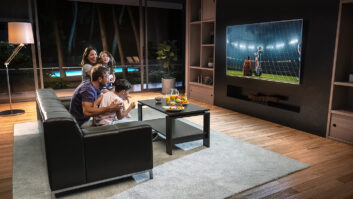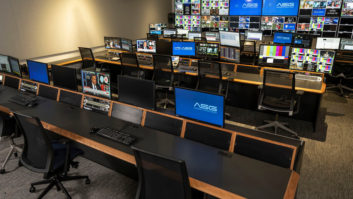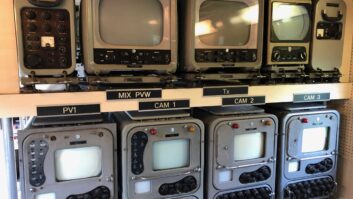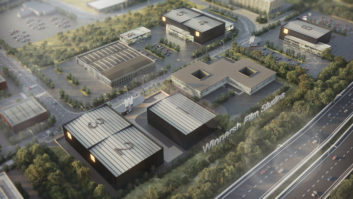TF1, France’s largest private television broadcaster, has selected Panasonic’s P2 technology for a major upgrade to the camera systems of its high-profile news department. Added to the week’s earlier news that Belgium’s Francophone public broadcaster, RTBF, is planning to adopt Panasonic’s P2HD format, it all adds up to a good European week for the manufacturer, writes Fergal Ringrose.
“When upgrading our news cameras, we were looking for modern and flexible solutions capable of recording onto nonlinear media that could be easily used with our editing systems,” said Lucien Setton, director of external productions for TF1.
“Transitioning to new recording media is a very big step for any broadcaster, and Panasonic’s P2 format provided a perfect answer for the needs of TF1,” said Andr_ M_t_rian, director of Panasonic’s broadcast business unit for France. “The P2 cards are very easy to use, and they allow TF1 to shoot in various formats and modes on the same camcorder. Furthermore, transferring the footage stored on P2 cards is much faster, and using them natively maintains optimal video quality. With P2 cards, content is available quicker than ever because the journalist or editor has direct, nonlinear access to it, allowing editing to take place immediately.”
Panasonic’s P2 technology is a recording system based on solid-state memory cards that store all video, audio, and metadata. The P2 system is directly embedded in the camcorder, which is equipped with several memory slots in which cards may be inserted. Audio and video data are then recorded on the cards using the MXF format, which allows for a perfect integration into all leading editing systems. Moreover, P2 users can easily edit directly on-site using a laptop, eliminating the need for VTRs.
“The 16-GB P2 cards usually store more than enough content for our applications,” said Setton. “Whether we use the DVCPRO codec for SD or HD, the recording lengths we get with P2 cards are at least the same as what we had with tapes, but with the added benefit of quick writing speed, reliability, and immediate access to data.”
Meanwhile, at RTBF, the Belgian broadcaster is planning to adopt the P2HD format for SD and HD acquisition in its new IT-based production system, which will facilitate DVBH, IPTV, and internet applications.
When installation of the IT-based production system is complete, RTBF will utilise 60 P2HD Panasonic AJ-HPX2100 camcorders.
“After shopping around, it became clear that the P2HD format would be a perfect match with our IT-based production system, which is currently under installation,” said C_cile Gonfroid, director of TV production at RTBF. “Utilising a solid-state recording medium, we will be able to streamline our operations by quickly and efficiently distributing content over our network for editing and other functions. This will provide significant time savings to decrease production costs while ensuring the quality of our product.”
The AJ-HPX2100 camcorder features a multiformat capability that allows recording in 1080i/720p HD or SD. For high-quality video, it offers DRS (Dynamic Range Stretcher) functionality, along with an enhanced digital image treatment technology and a 12 linear matrix colour compensating function. In addition, the camera supports 2/3-inch HD progressive 3 CCD technology, as well as F10 (2000lx) sensitivity video recording.
“With its solid-state memory and ease of content transfer, the AJ-HPX2100 will really help us to close the gap between the A/V world and the IT world when our new production system is up and running,” said Etienne Bastin, RTBF’s manager, ENG technical services. “In addition, its ability to record in interlaced and progressive formats will be invaluable in SD and even more so in HD productions and broadcasts.”







